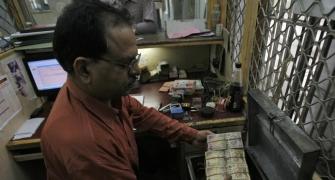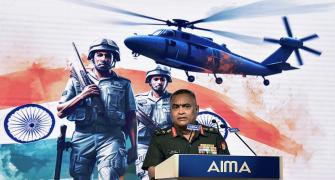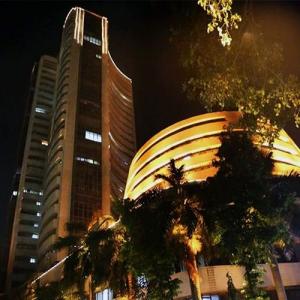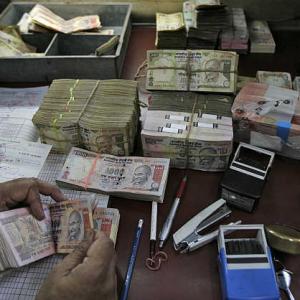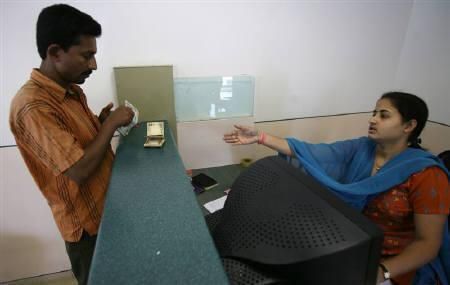 Want to become an ‘officer’?
Want to become an ‘officer’?
Try to get a job in Axis Bank.
All the 42,420 people who worked for the third-largest private sector bank in the country in 2013-14 were designated as officers.
Kotak Mahindra Bank and Yes Bank are some of the other leading banks that had a similar employee profile.
In private banks, only 21 per cent of the nearly 300,000 employees fall in the category of clerks.
Foreign banks, with only 6 per cent clerks among their ranks, have always preferred to hire more officers.
This skew means that the entire banking system in India is now biased towards officers. An exception is ICICI Bank, the largest private bank, where nearly 55 per cent of employees were clerks in 2013-14.
Of the 1.15 million employed by the scheduled commercial banks in 2013-14, more than 600,000 were officers.
However, the country’s largest bank, State Bank of India, still has more clerks than officers on its rolls.
Nearly half of the bank’s approximately 200,000 employees are categorised as clerks, according to the latest data with the Reserve Bank of India, or RBI.
But even that represents a big change.
“In 1975 when I joined the banking system, a branch with 20 employees used to have not more than three officers, the rest being clerks,” says SS Shishodia, president of All India Bank Officers’ Association.
“The entire banking system used to have the same officer-clerk ratio. Now the ratio is close to 1 in PSU banks.”
On the face of it, the private banks’ preference for officers may seem cosmetic.
“It is just a question of how you designate your employee,” observes a senior executive of a leading private bank who does not want to be named.
“Some private banks prefer to describe sales executives and others doing similar tasks as officers, when others would put them in the category of clerks. It depends on the human resource policy of a particular bank.”
But there are others familiar with the banking system who say that the bias for officers is easily explained.
The change in the employee profile has been necessitated by computerisation of the banking system, which has rendered clerical functions almost redundant.
“Earlier, clerks would make an entry and officers would check and authorise transactions. It was known as the maker-checker model,” explains a PSU bank official.
“Now that most of the banking system is computerised, there is no need to check transactions manually.”
Keeping unions at bay
The preference for boosting the officer rank also arises out of the fear of active unionism. Shishodia points out, “The policy of recruiting more officers means the private banks do not want unions in their establishments.”
This perhaps explains why none of the large private sector banks has an employees’ union.
In the case of nationalised banks, higher-ranked officers are not allowed to go on strikes, say union leaders, that prerogative being reserved for clerks and officers falling in Scale 3 or below.
The public sector banks are now starting to hire fewer subordinate staff, but this has its costs. It has pushed the average cost of employee in PSU banks to a level even higher than in private banks.
According to a Boston Consulting-Indian Banking Association report, the average employee cost of public sector banks has been rising steadily since 2008.
In 2010, it stood at Rs 560,000, slightly higher than the average cost of employee in private banks, which was Rs 530,000.
The report adds that ‘about 62 per cent of the costs of the public sector banks comprise employee costs, as against 37 per cent in the private sector’.
The other side
A banker points out an additional benefit of hiring more officers: “It gives new employees a sense of responsibility.
“Once that happens, they do not insist on fixed working hours in pursuit of achieving targets.”
Unfortunately, this aspect has not reflected on an increased efficiency in PSU banks. RBI’s ‘Report on Trend and Progress of Banking in India 2012-13’ noted that ‘for public sector banks, which account for the largest share in the Indian banking sector, the average efficiency scores were above that of private sector banks over a major part of the period under consideration (2000 to 2013). However, they lagged slightly behind the scores of private sector banks after 2010.’
Bankers working with nationalised banks are of the view that the twin factors of achieving operational efficiency and better labour relations may have led banks to hire more officers than clerks.
“Officers are required to work 24/7. There is no provision for additional work incentive for them.”
However, in the case of clerks, you are required to pay overtime and conveyance allowances if you keep them at work even for 10 extra minutes.
“We work on Sundays and many times on holidays, and we are not paid overtime,” says an officer of a public sector bank.
While the probability of strikes by disgruntled staff may come down in PSU banks, operational efficiency is possible only after thorough restructuring of existing processes. This is what an official committee looking at human resource issues in public sector banks in 2010 had alerted the government to.
Its report said, “Nearly 90 per cent of the staff in PSBs is deployed in branches and the rest in administrative offices.
“Over 60 per cent of the time of branch staff is spent on non-customer facing roles and less than 10 per cent of the staff is devoted to proactive sales.
“There is thus perpetuation of routine clerical content in branches even after the introduction of technology.
“In view of impending nature of new sales and service roles, such disproportionate allocation of roles on routine activities is dysfunctional to productivity enhancement and customer focus.”
HIRING TRENDS
- 52 per cent officers in the banking system now as opposed to just 38 per cent 10 years ago
- Most private sector banks hire officers only
- Technology has rendered clerical functions redundant
- Officer-only model driven by the desire to have better industrial relation
- Clerks and only junior level officers allowed to go on strike
- The new approach has pushed up the average employee cost of PSBs


